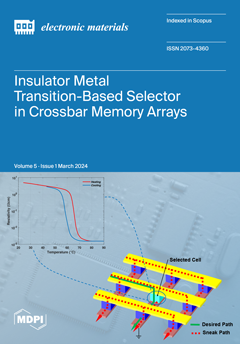The impact of N
2 purging in the CdS deposition bath and subsequent N
2 annealing is examined and contrasted with conventional CdS films, which were deposited without purging and annealed in ambient air. All films were fabricated using the chemical bath deposition
[...] Read more.
The impact of N
2 purging in the CdS deposition bath and subsequent N
2 annealing is examined and contrasted with conventional CdS films, which were deposited without purging and annealed in ambient air. All films were fabricated using the chemical bath deposition method at a temperature of 80 °C on fluorine-doped tin oxide glass slides (FTO). N
2 purged films were deposited by introducing nitrogen gas into the deposition bath throughout the CdS deposition process. Subsequently, both N
2 purged and un-purged films underwent annealing at temperatures ranging from 100 to 500 °C for one hour, either in a nitrogen or ambient air environment. Photoelectrochemical (PEC) cell studies reveal that films subjected to both N
2 purging and N
2 annealing exhibit a notable enhancement of 37.5% and 27% in I
SC (short-circuit current) and V
OC (open-circuit voltage) values, accompanied by a 5% improvement in optical transmittance compared to conventional CdS thin films. The films annealed at 300 °C demonstrate the highest I
SC, V
OC, and V
FB values, 55 μA, 0.475 V, and −675 mV, respectively. The improved optoelectrical properties in both N
2-purged and N
2-annealed films are attributed to their well-packed structure, enhanced interconnectivity, and a higher sulfur to cadmium ratio of 0.76 in the films.
Full article




